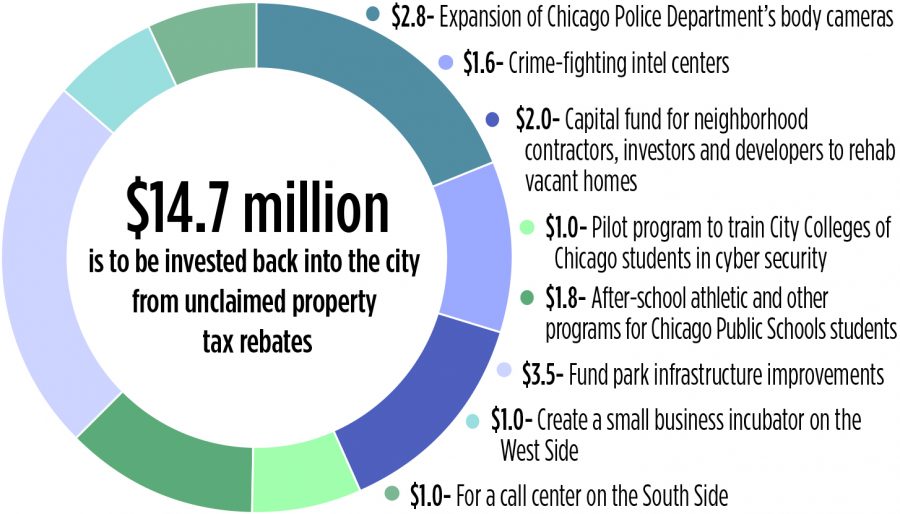Millions invested in public safety after alderman resistance
Millions invested in public safety after alderman resistance
February 27, 2017
Nearly $15 million will fund public safety and neighborhood improvement projects after Mayor Rahm Emanuel and city aldermen resolve conflicting views on how the money should be allocated.
The decision, made Feb. 22 at an impromptu finance committee meeting preceding City Council, was delayed by one day while Emanuel and aldermen led by Ald. Raymond Lopez (15th Ward) squared off over where the funds should go.
Emanuel’s plan called for funding park infrastructure, police body cameras, Chicago Public Schools athletic programs and other initiatives including $500,000 to plant 1,000 trees.
“I’ve heard in this body plenty of times that we can’t sacrifice the good in order for the perfect,” Lopez said during the Council meeting. “I also know more than most the extent that the violence has had in our communities.”
The substitute ordinance, approved by a 35-10 City Council vote, followed Emanuel’s plan except for the tree planting. As a compromise, the $500,000 will go to strategic decision support centers around the city.
Lopez’s proposal would have allocated funding for trauma- informed case management and counseling for at-risk youth, extended One Summer Chicago to be a year-round employment program and expanded the mayor’s social support program for at-risk youth so it starts in 5th grade instead of high school.
“I know many will say this is not sufficient or not complete,” Lopez said. “But I have faith that we are taking the first of what will hopefully be a continued march toward protecting our children .”
Brighton Park Neighborhood Council supported Lopez’s plan because the city’s South and West sides do not receive adequate attention, said Michelle Pantoja, the organization’s development and communications manager. If Emanuel showed support for Lopez’s plan, it would help him gain credibility in their community, where they consider him “nonexistent,” she added.
Although not involved in the approval process, Deputy Mayor Andrea Zopp said the mayor’s office is dedicated to finding a source for a minimum $1 million in funding for violence intervention programs—like CeaseFire—which have been proven effective in the neighborhood, according to the organization’s communications consultant Glenn Reedus.
CeaseFire sends in respected members of the community into the neighborhood to help mediate violence while also providing help to citizens to find jobs, continue their education and get food, according to Reedus.
Because Gov. Bruce Rauner cut CeaseFire’s funding in March 2015, Reedus said the group has not been able to send in as many “violence interrupters” into the neighborhoods, which directly correlates with rises in crime. Restoring funding to the group would more put workers back on the streets so it can properly function as it did before the cuts were made.
“This is not a South Side or West Side problem,” Reedus said. “Everybody needs to be pushing their aldermen and state [representatives] to restore CeaseFire funding.”
Ald. Ricardo Munoz (22nd Ward), member of the Chicago Progressive Reform Caucus, said he was disappointed that street-intervention funding that could potentially go toward after-school programs and keeping kids off the streets would not immediately be available.
“For [the Emanuel administration] to come before us and ask us to spend this kind of money and not even consider including some street intervention money is just not good,” Munoz said at the meeting. “It’s actually a slap in the face to City Council. It just seems like [the administration is] tone deaf to the fact that these kids need something to do.”








